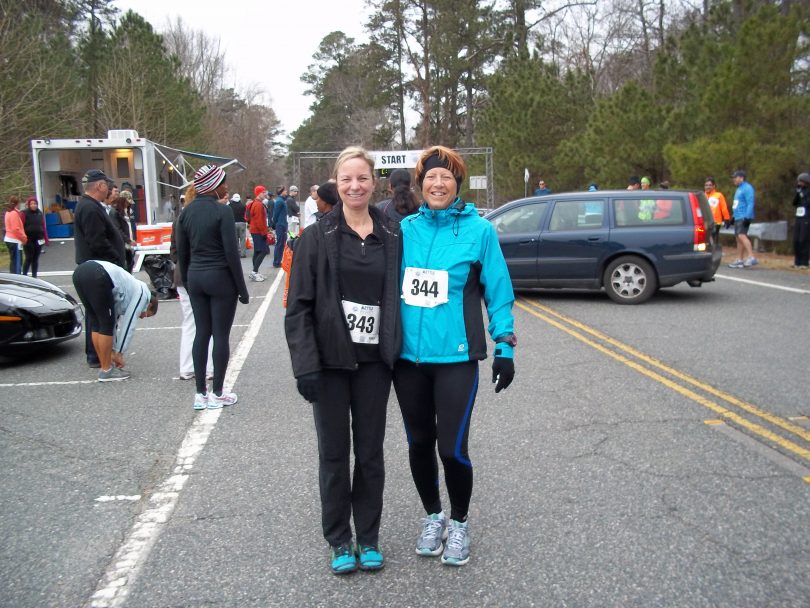Everything started with swollen legs. Jan Morrow looked down after an early morning run about five years ago and thought her lower legs looked strange, and they only got bigger during her day as a high school special education teacher. Still, given that Morrow was running 40 or 50 miles a week and waking up at 3 a.m. for gym workouts, she couldn’t have imagined that her body was failing.
After school, a simple blood test by her primary care physician found the Virginia Beach resident was critically anemic. Then another test determined she was in kidney failure. And then a scan discovered an abnormal growth in her left lung. “It just spiraled so incredibly fast, like, ‘boom, boom, boom,’” remembers Morrow, 56. “It was unbelievable.”
The diagnosis: amyloidosis, a group of rare illnesses with similarities to multiple myeloma, a cancer that originates in bone marrow. In amyloidosis, bone marrow cells produce abnormal proteins that can accumulate in any organ system, including the heart, liver, lungs, nervous system and kidneys. The incurable disease generally strikes people older than 60 and is so uncommon—there are fewer than 3,000 cases in the country, according to the Mayo Clinic—that it often goes undiagnosed.
As a self-described “gym rat” who had finished several marathons, Morrow was devastated but determined to focus on surviving her amyloidosis diagnosis. She would need surgery to remove her lung growth, chemotherapy drugs to target the abnormal bone marrow cells, kidney dialysis and, at some point, a kidney transplant. Morrow may also need a bone marrow transplant if her disease reappears.
At first, not being able to work out “made me a crazy person,” Morrow admits. “I just thought it was the end of my life.” She missed running terribly. “The euphoria it gives you, there’s nothing else like it,” she says. “You get in this groove and you don’t even know how you got to the finish.”
With time has come physical and mental strength—and a determination to get back to running again, possibly even in another marathon one day. This spring, Morrow has been walking about two hours a day despite another recent health setback, a bacterial infection likely linked to her illness that damaged her spine. In March, she completed a 15K, or 9.3 miles, in just over two hours, and she may enter a half-marathon in June. “I’m just thankful I’ve got legs and they work,” she says.
Morrow has three pieces of advice for others sidelined by health problems. First is to find joy in the tiniest moments; in her case, that included sitting in a patio chair after a hospital stay and feeling the sun on her skin. Second is to take life one day at a time, or, if that seems overwhelming, 15 minutes at a time. And third is to focus on helping other people. “I am not a victim,” she says.
Morrow is on the NxStage System One’s home hemodialysis system five days a week, two hours at a time.
Once she has been disease-free for five years, which would be this June, she can begin looking for a kidney donor; several relatives and friends plan to be tested as possible matches. “I’m going to be beating the bushes,” Morrow says. “I believe God has placed a person on Earth who can help me.” She also has had healthy bone marrow cells harvested in case she ever needs a transplant. Surviving amyloidosis has been a tough journey.
Retired from her 30-year teaching career that focused on hearing-impaired students, Morrow enjoys gardening and time with friends and family, including her husband Bill, two stepchildren and three grandchildren. Her goal is to be running by the end of the summer. “I’m getting there,” she says. “I’ve just got to be patient.”



